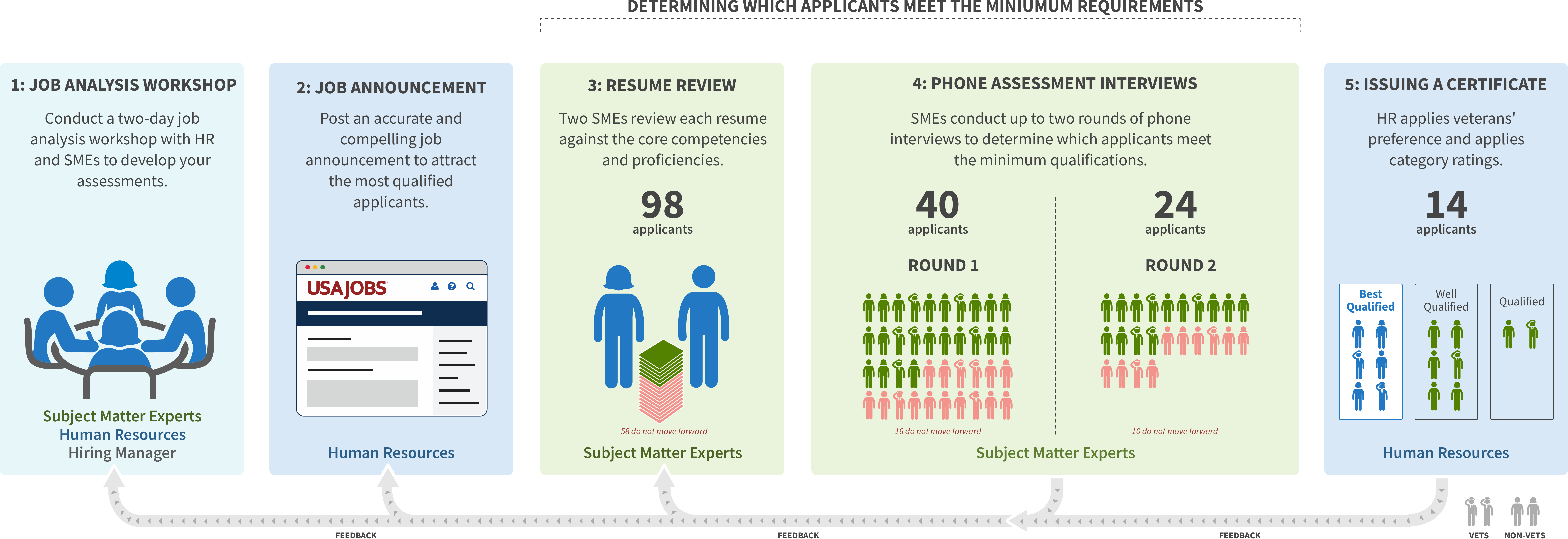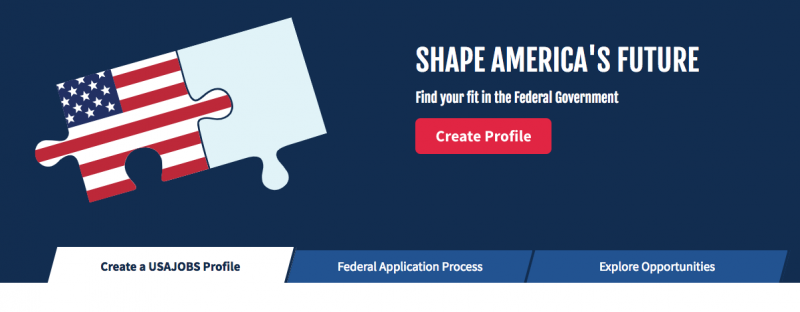A recent hiring pilot spearheaded by the United States Digital Services (USDS) and the Office of Personnel Management (OPM) could serve as a new model for how federal agencies involve subject matter experts earlier in the hiring process. Because of a reliance on subjective self-assessments, the federal government often has trouble weeding out unqualified candidates and quickly finding those who are qualified.
This approach could be particularly useful for technical roles that receive large numbers of applicants but also those that have a clear set of qualifications.
“What we were essentially testing was the notion that we could get better outcomes by applying existing law and existing [regulations] in a way that is different than what … common practice uses to determine qualification,” Margaret Weichert, Deputy Director for Management at the Office of Management and Budget, told GovLoop in an exclusive interview. “So ever since we eliminated civil service exams, what has been happening is a migration towards this sort of self-assessment process.”
Therein lies a big part of the problem for federal agencies when it comes to hiring. When human resources (HR) relies on job applicants to self-assess themselves, large pools of people rate themselves as qualified for a job when they aren’t. One example Weichert shared was someone saying they were qualified for a job managing the strategic petroleum reserve because they had worked as a gas station attendant.
“That’s a problem because we actually want the competitive service to provide the best candidate,” Weichert said. “People who are not qualified are essentially blocking people who are qualified from getting visibility.”
In most competitive hiring processes, HR compiles the list of people who respond to a job opening, and because of self-assessments, the list is usually very lengthy. HR uses this process to produce a shortlist of candidates who meet the job qualifications.
How the Pilot Works
As part of the President’s Management Agenda, the administration launched a hiring pilot, known as the Subject Matter Expert Qualifications Assessment (SME-QA), where USDS worked with both Interior and Health and Human Services (HHS) departments around hiring in the competitive service.
In these particular cases, the agencies were looking to hire IT professionals. Under the pilot, subject matter experts partnered with HR specialists to conduct resume reviews and structured interview assessments before determining if an applicant was qualified and applying veterans’ preference. They did not rely on the self-assessment to make that determination.
The pilot process was recommended for technical positions, such as IT, that are classified as GS-12 and higher on the federal government’s General Schedule pay scale. Under the pilot, there was also a preference for testing roles where there were at least five vacancies for the same position and where applicant volume may be limited to 100 to 200 applicants.
“We were able to screen a lot of potential applicants and arrive at a list of truly qualified applicants,” Weichert said. “In fact, even those that did not receive offers, the list is being used to fill future vacancies. And so it’s dramatically improving the quality, the speed and the efficiency of the overall process.”
Agencies are already showing interest. The Justice Department, for example, is looking at potentially using this process for hiring paralegals.
Below is a graphic of what federal hiring looks like under the new pilot.

Pilot Outcomes
In terms of speeding the hiring process, Weichert couldn’t provide specific numbers but said the new process cut months off the usual hiring times. The main benefit is that using experts up front to weed out unqualified candidates reduced the number of people who have to be considered who are really not qualified, powering the reduction of hiring times.
“More importantly, a huge number of the overall competitive job openings result in no hiring at all,” she said. “And then you basically go back to the drawing board.” In some cases, hiring managers are so overwhelmed by nonqualified candidates that they use hiring exceptions to fill positions as opposed to going through the traditional process.
The larger issue at hand that the administration expects this pilot will address is that the traditional process was locking out truly qualified candidates and clogging the pipeline with people who were fundamentally unqualified.
The chart below shows how many candidates were considered qualified based on the self-assessment, or the baseline qualification rating. Self-assessment rates of qualification are substantially higher than the pilot qualification rate, in which experts made the determinations.
Inevitably, that leads to a smaller pool of applicants, but a larger overall number of qualified professionals. Hiring managers are freed up to spend more time interviewing truly qualified candidates.

Weichert admits the ratio of hired candidates to qualified candidates is low, but the expectation is that a pool of qualified applicants can be shared broadly with hiring managers looking to fill similar positions.
What’s next?
Many in the hiring community have argued that the self-assessments do not provide value. But when asked if they’d be going away, Weichert said the administration would not stop agencies from using them.
Although applicants who were assessed during the pilot did fill out the self-assessment, the agencies did not use the assessments to determine if candidates were qualified, she said. “It might be something that would be useful in preparing for an interview, but it is not a determining factor in the pilot. So, we’re not yet prepared to say, ‘You know, eliminate the self-assessment,’ but I think it is well understood that there are many serious problems with the self-assessment.”
The administration will issue formal guidance around the SME-QA pilot that prescribes how agencies can take a similar approach, without requiring them to follow suit.





This is awesome! Thank you!